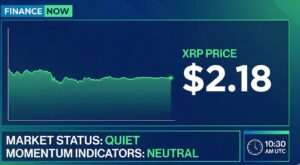When it comes to digital transactions and distributed ledgers, blockchain technology has proven to be a game changer. Due to its secure and transparent nature, it is gaining significant attention and popularity.
As the blockchain ecosystem evolves, new developments appear to improve its capabilities and compatibility with other systems. Blockchain bridges are one such innovation, as they are crucial in bridging the gap between various blockchain networks.
What Are Blockchain Bridges?
Blockchain bridges function similarly to physical bridges that we are familiar with. A blockchain bridge is similar to a physical bridge in that it links two blockchain ecosystems together. Bridges enable exchanging information and assets between different blockchains, promoting communication.
Why Do We Need Blockchain Bridges?
Every blockchain has its own set of limitations. Blockchains evolve in isolated contexts and have unique rules and consensus procedures. This implies they can’t communicate natively, and tokens can’t travel freely between blockchains. Bridges exist to connect blockchains, allowing information and tokens to be transferred between them. Bridges enable the following:
- It permits the cross-chain transfer of assets and information.
- It allows dapps to use the strengths of other blockchains, boosting their capabilities (since protocols now have greater design freedom for innovation).
- It helps users access new platforms and enjoy the benefits of many chains.
- It allows developers from various blockchain ecosystems to interact and create new platforms for users.
Types Of Crypto Bridges
Trusted Bridge
A trusted bridge is a cross-chain protocol managed by a centralized entity. During bridging, asset control shifts from the users to the centralized authority. For a transaction to occur, users must trust the centralized entity’s reliability and effectiveness. Users must trust that the centralized entity will not steal their assets and will safeguard their funds from attackers. Binance Bridge is a well-known instance of a trusted bridge. If you prioritize speed and lower gas fees over cross-chain security, trusted bridges may be a better option.
Trustless Bridges
Trustless bridges differ from trusted ones because they do not depend on a single central authority. They do not rely on human intervention but rather on algorithms and smart contracts to facilitate the process. There is no centralized system to manage funds, so users are solely responsible for their own funds. Compared to trusted bridges, trustless bridges are considerably more decentralized. Trustless bridges may not be as inexpensive as their counterparts, but they offer greater security when the underlying technology is reliable. Decentralized finance (DeFi) relies on trustless bridges as a fundamental component.
Conclusion
Blockchain bridges are important for connecting different blockchain networks and making them work together. By allowing for the smooth transfer of assets and information, new opportunities emerge for decentralized applications and transactions between different blockchains. Blockchain bridges play a vital role in connecting different blockchain networks, driving the advancement and potential of decentralized technologies as the blockchain ecosystem progresses.




























